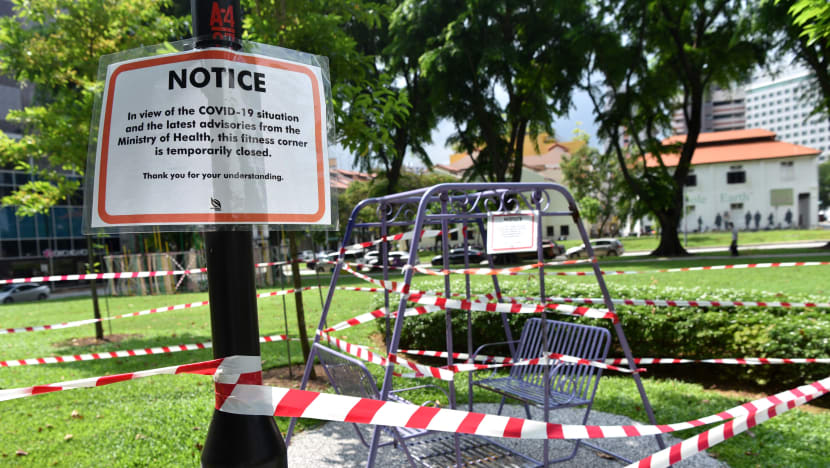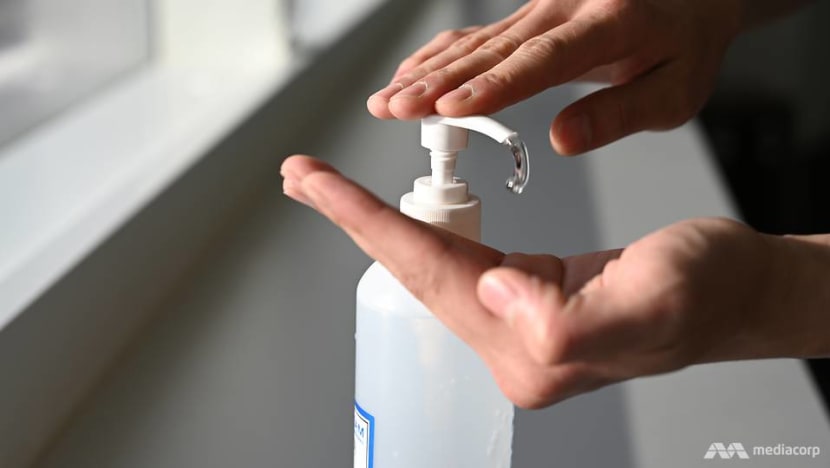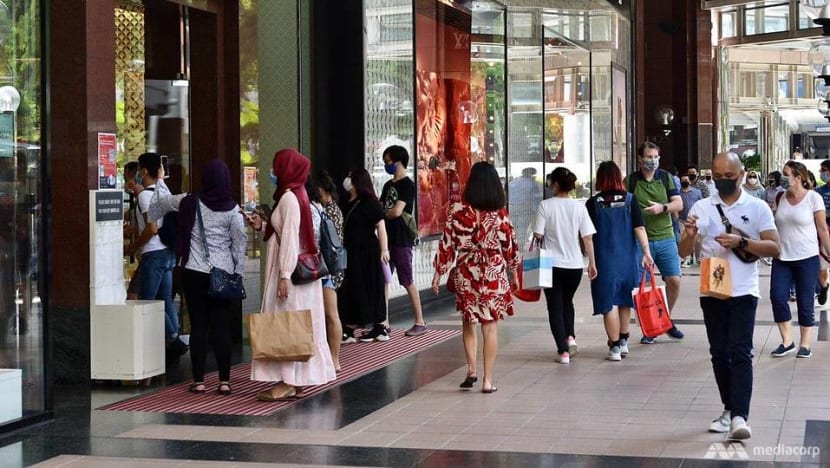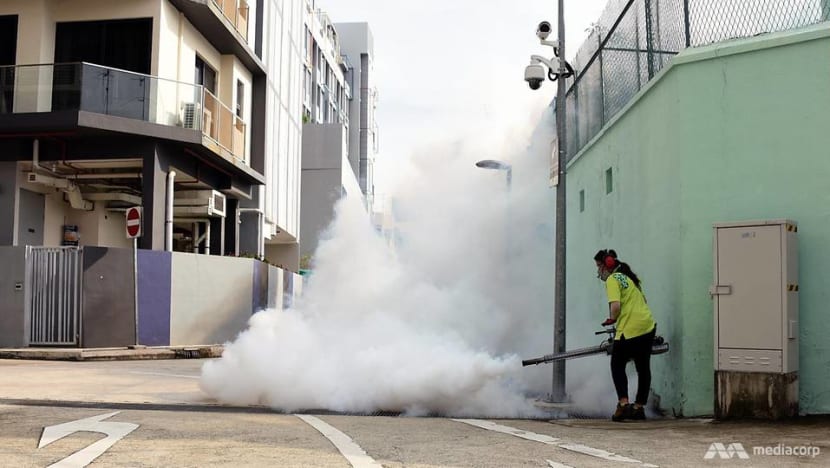How the COVID-19 circuit breaker and safe distancing stopped other infectious diseases in their tracks

Fitness corners in parks sealed off during Singapore's circuit breaker period. (Photo: Jeremy Long)
SINGAPORE: The “circuit breaker” and safe distancing measures implemented to curb the spread of COVID-19 in Singapore may have led to a decline in other infectious diseases, including whooping cough, measles and acute conjunctivitis.
Singapore implemented a circuit breaker between Apr 7 and Jun 1 this year to help prevent the spread of the coronavirus, with schools moving to full home-based learning and hundreds of thousands of people working from home.
On Jun 2, the country resumed some activities as part of its Phase 1 of reopening, before moving into Phase 2 on Jun 19.
Latest data from the Ministry of Health (MOH), published on Thursday (Aug 13), showed a fall in nearly all airborne and droplet-borne diseases in Singapore since the start of the year.
As of Aug 8, the number of measles cases fell from 131 at this time last year to just 10 this year. Cases of mumps have also fallen, from 258 to 179.
The figures also showed a decline in the number of recorded cases for whooping cough – from 49 this time last year to just 11 this year.
The number of invasive pneumococcal disease has also dropped from 91 at this time last year to 36 this year.
READ: Transition to a 'new normal' after circuit breaker: How will measures be lifted beyond Phase 1?
READ: Singapore to gradually reopen borders, plans to resume essential travel among countries with low COVID-19 transmission rate

There was a similar decline in cases of melioidosis (34 to 21), which can be contracted when someone comes in contact with contaminated water and soil. According to SingHealth, melioidosis can be associated with severe infections, with mortality rates as high as 40 per cent in some cases.
There have also been drastic decreases in the weekly number of people seeking treatment at polyclinics for more common infectious diseases, such as acute diarrhoea, acute conjunctivitis and chickenpox.
In the week ending May 30 – a day before the end of the circuit breaker – the number of people treated at polyclinics for acute diarrhoea fell from 637 last year to just 141.
The trend has continued into Phase 2: In the week ending Aug 8, only 336 people this year sought treatment for acute diarrhoea compared to the 696 in the same week last year.
There were similar trends for instances of acute conjunctivitis, chickenpox and hand, foot and mouth disease.
READ: From dawn to dusk, Singapore as it exits its COVID-19 circuit breaker: In pictures
INCREASED AWARENESS ABOUT HYGIENE
Associate Professor Richard Sugrue, from the Nanyang Technological University (NTU)’s School of Biological Sciences, told CNA he was not surprised at the fall in the number of airborne infectious diseases.
“Airborne agents can be very infectious and easily spread between people that come in close contact,” he said.
“The isolation of individuals at home during the circuit breaker had largely restricted the movement of people.
“This in effect impedes the transmission process of these biological agents by reducing number of occasions when an individual can potentially come into contact with an infected person.
“You only have to think of a school where children intermingle and transmission of respiratory-borne agents can occur.”
An “additional effect” of the circuit breaker is the increased awareness about the spread of infectious diseases in the community.
People may now be “more aware” of the importance of maintaining good personal hygiene, leading to reduced instances of virus transmission, Assoc Prof Sugrue said.
READ: Commentary: The circuit breaker was a time many of us want to forget. Let’s make it count

Dr Leong Hoe Nam, an infectious diseases physician at Mount Elizabeth Hospital, said people masking up also helped prevent the transmission of droplet-borne diseases.
“No meeting, no transmission,” he added.
National University of Singapore’s (NUS) Professor Paul Tambyah said it was “hard” to attribute changes in the numbers to the circuit breaker.
“There are many facets of the lockdown including cutbacks in some screening services, which might have had an impact on HIV detection rates, for example,” he told CNA.
READ: The Big Read: Life after circuit breaker - retail, entertainment and leisure won’t be the same again
But he said there may be “direct impact”, such as fewer cases of respiratory infections and diarrhoea due to social isolation.
“There also may be other indirect effects such as reduced testing for some viruses due to the need to conserve swabs and reagents for (COVID-19),” he said.
This means there may not have been “an actual drop” in the number of cases, but rather, a reduction in case detection.

INCREASE IN PHASE 2?
With the country now in Phase 2, the experts believe the easing of measures and the increased contact and interaction between people might lead to more infections.
“This is not something to be alarmed about since this is actually the normal situation in the community,” explained Assoc Prof Sugrue.
“It can actually lead to increased herd immunity in a population. It just means that people that are at risk of developing severe symptoms from, example, COVID-19 or influenza virus infection, should be monitored.”
Dr Leong said the “creep up will be slow” because people are still wearing masks when they are out and about.
READ: 'We are not returning to a pre-COVID-19 world': Chan Chun Sing maps out 'new path' for Singapore
RISE IN DENGUE CASES
Not all infectious diseases have been slowed by the coronavirus measures. There has been a surge in dengue cases, with Singapore in the midst of its worst dengue outbreak, with 23,500 cases as of Aug 8.
In all, 20 people have died from dengue this year as of Aug 2, said the MOH. The youngest victim was 25 years old, while the oldest was 92 years old.
Eighteen of the victims had worked or lived in active dengue clusters.

During the circuit breaker period, non-essential workplaces and schools were shuttered and people were told to stay home.
This could have led to more residential mosquito breeding and more opportunities for “blood meals”, said Associate Professor Luo Dahai from NTU's Lee Kong Chian School of Medicine to CNA previously.
The Aedes aegypti mosquito, which spreads the dengue virus, dwells mainly in indoor spaces and bites primarily during the day.
Assoc Prof Sugrue said there might now be a reduction in the weekly number of dengue cases, with things “starting to return to normal”.
But this decline will depend on other environmental factors. If there is increased rainfall, it could lead to an increase in the number of stagnant pools of water that collect after rain, he added.
Mount Elizabeth Hospital’s Dr Leong said the number of dengue cases “will still be massive”, because a lot of people are still working from home, and that the number of people returning to work places is “not enough to make a difference”.
Prof Tambyah said the number of people going to work is not going to reduce dengue incidence.
“The Aedes mosquito bites at dusk and anecdotally many of us are bitten in the evenings on the way back from work or the supermarket,” he added.
BOOKMARK THIS: Our comprehensive coverage of the coronavirus outbreak and its developments
Download our app or subscribe to our Telegram channel for the latest updates on the coronavirus outbreak: https://cna.asia/telegram














